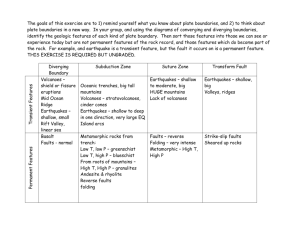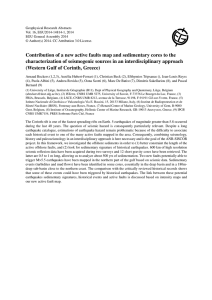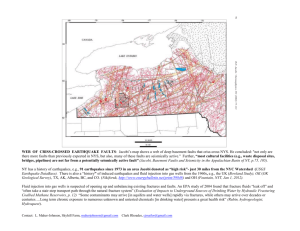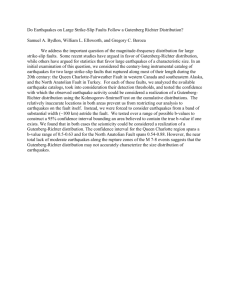2011 KUNM Earth Science Week: Earthquake Landscapes
advertisement
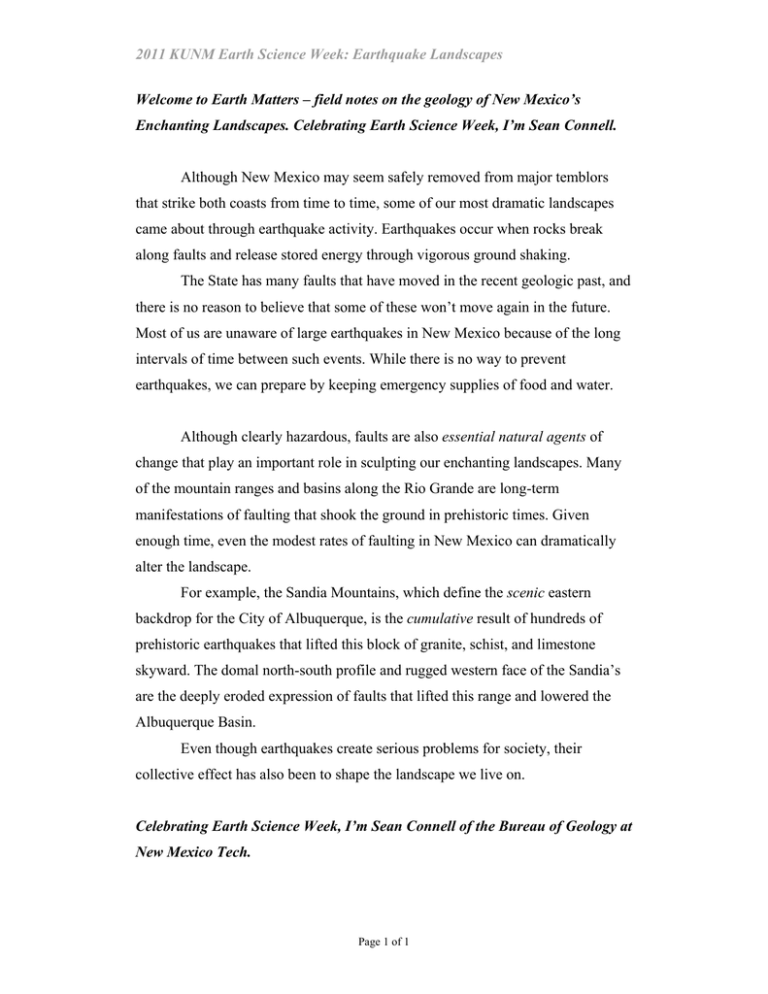
2011 KUNM Earth Science Week: Earthquake Landscapes Welcome to Earth Matters – field notes on the geology of New Mexico’s Enchanting Landscapes. Celebrating Earth Science Week, I’m Sean Connell. Although New Mexico may seem safely removed from major temblors that strike both coasts from time to time, some of our most dramatic landscapes came about through earthquake activity. Earthquakes occur when rocks break along faults and release stored energy through vigorous ground shaking. The State has many faults that have moved in the recent geologic past, and there is no reason to believe that some of these won’t move again in the future. Most of us are unaware of large earthquakes in New Mexico because of the long intervals of time between such events. While there is no way to prevent earthquakes, we can prepare by keeping emergency supplies of food and water. Although clearly hazardous, faults are also essential natural agents of change that play an important role in sculpting our enchanting landscapes. Many of the mountain ranges and basins along the Rio Grande are long-term manifestations of faulting that shook the ground in prehistoric times. Given enough time, even the modest rates of faulting in New Mexico can dramatically alter the landscape. For example, the Sandia Mountains, which define the scenic eastern backdrop for the City of Albuquerque, is the cumulative result of hundreds of prehistoric earthquakes that lifted this block of granite, schist, and limestone skyward. The domal north-south profile and rugged western face of the Sandia’s are the deeply eroded expression of faults that lifted this range and lowered the Albuquerque Basin. Even though earthquakes create serious problems for society, their collective effect has also been to shape the landscape we live on. Celebrating Earth Science Week, I’m Sean Connell of the Bureau of Geology at New Mexico Tech. Page 1 of 1


